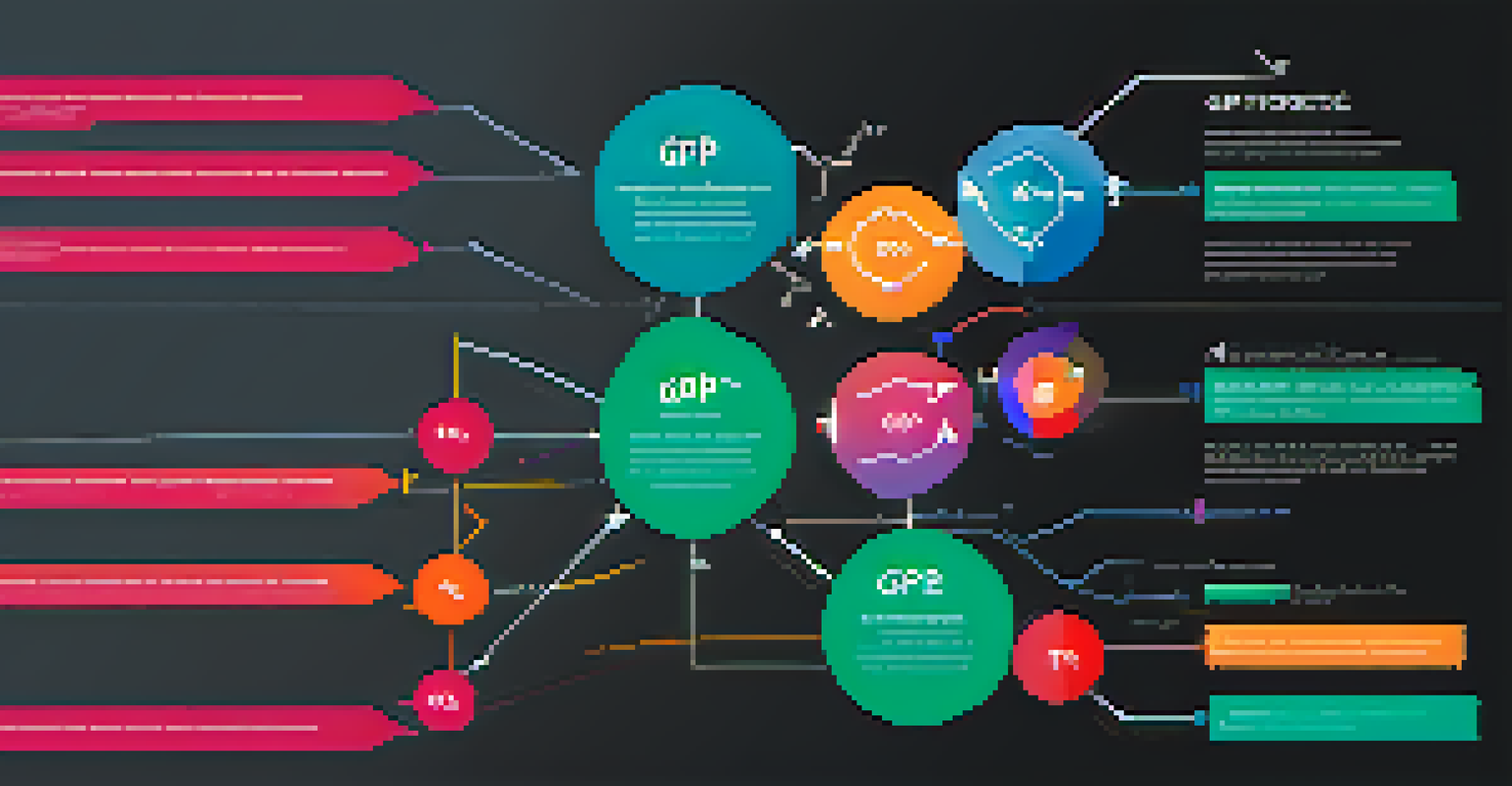How to Monitor and Interpret Interest Rate Movements

Understanding Interest Rates and Their Importance
Interest rates are the cost of borrowing money, expressed as a percentage. They play a crucial role in the economy, affecting everything from mortgage rates to savings accounts. By understanding how interest rates work, you can make more informed financial decisions.
Interest rates are like the weather; they can change quickly and affect everyone.
When rates rise, borrowing becomes more expensive, which can slow down consumer spending and investment. Conversely, lower rates can stimulate the economy by encouraging borrowing and spending. This delicate balance is key to monitoring economic health.
As you learn about interest rates, consider their broader implications. They influence inflation, employment rates, and even your personal finances. Knowing how to interpret these movements can empower you to make smarter financial choices.
Key Indicators to Monitor Interest Rate Changes
Several key indicators can help you track interest rate movements effectively. The most notable among these are the Consumer Price Index (CPI), unemployment rates, and GDP growth. These metrics provide insight into the overall economic climate.

For instance, if the CPI shows rising inflation, central banks might increase interest rates to stabilize prices. On the other hand, a high unemployment rate could prompt rate cuts to encourage borrowing and spending. Keeping an eye on these indicators can guide your financial decisions.
Interest Rates Impact Economy
Interest rates influence borrowing costs, consumer spending, and overall economic health.
Additionally, consider monitoring central bank announcements and minutes from their meetings. These provide valuable context for interest rate changes and can hint at future movements. Staying informed about these indicators will help you make sense of the market.
Using Economic Calendars for Interest Rates
An economic calendar is a handy tool that lists important economic events and data releases. By checking this calendar regularly, you can anticipate potential interest rate changes and their impact on the economy. It’s like having a crystal ball for financial trends.
The most important thing is to keep the most important thing the most important thing.
Events such as Federal Reserve meetings, employment reports, and inflation data releases can significantly influence interest rates. Knowing when these events occur allows you to prepare and adjust your financial strategies accordingly.
Many financial websites and apps offer economic calendars, making it easy to stay updated. By incorporating this tool into your monitoring routine, you can enhance your understanding of interest rate movements.
Understanding Central Banks and Their Role
Central banks, such as the Federal Reserve in the U.S., play a pivotal role in setting interest rates. They adjust rates to manage economic growth, control inflation, and stabilize the currency. Understanding their objectives can help you interpret interest rate decisions more effectively.
When a central bank raises rates, it often signals confidence in the economy, while rate cuts can indicate concerns about economic slowdown. By paying attention to central bank communications, you can gain valuable insights into their future actions.
Monitor Key Economic Indicators
Tracking indicators like CPI and unemployment rates can help you anticipate interest rate changes.
Moreover, central bank policies can create ripples in global markets. A change in U.S. interest rates, for example, can impact currencies and investment flows worldwide. Being aware of these influences can enhance your understanding of interest rate movements.
Analyzing Historical Trends in Interest Rates
Looking at historical trends can provide context for current interest rate movements. Analyzing past rate changes helps you identify patterns and predict potential future shifts. It’s a bit like watching a movie to understand a character’s journey.
For example, during times of economic recession, interest rates often decrease to stimulate growth. In contrast, periods of economic expansion typically see rising rates. By recognizing these trends, you can make more informed predictions about future rate changes.
You can find historical interest rate data on various financial websites and platforms. By examining this information, you can develop a deeper understanding of how rates evolve over time.
Utilizing Financial News and Analysis
Staying updated with financial news is essential for monitoring interest rate movements. Reputable news outlets provide expert analysis and insights that can help you navigate complex financial landscapes. Think of them as your financial weather forecast.
By following economic analysts and financial journalists, you can gain perspectives on how interest rates may change and why. This can inform your own financial strategies and decisions.
Adjust Finances for Rate Changes
Proactively review loans and savings strategies based on expected interest rate movements.
Additionally, consider subscribing to financial newsletters or podcasts that focus on interest rates and economic trends. These resources can keep you informed and prepared for any shifts in the market.
Practical Steps to Adjust Your Finances
Understanding interest rate movements is one thing, but adjusting your finances accordingly is another. Start by reviewing your loans and credit arrangements; higher rates may mean it’s time to refinance. This proactive approach can save you money in the long run.
If rates are expected to rise, consider locking in fixed-rate loans while they’re still low. Conversely, if rates are falling, you might benefit from variable-rate loans. Being adaptable in your financial planning can make a significant difference.

Lastly, don’t forget to review your savings strategy. Higher interest rates typically mean better returns on savings accounts and fixed deposits. Keeping your financial goals in mind will help you navigate the changing interest rate landscape.